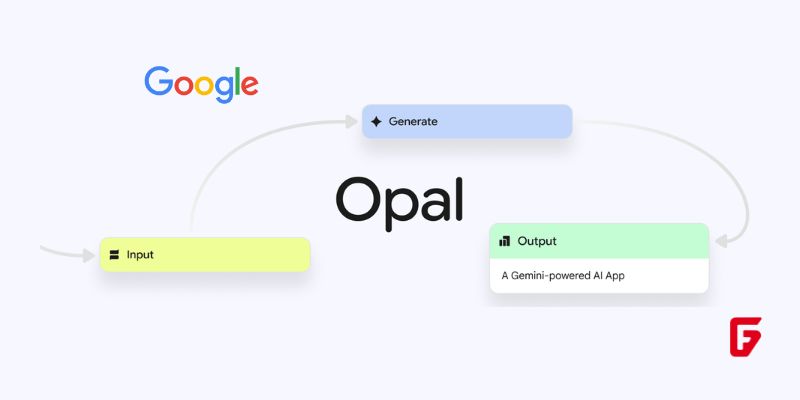Google Unveils Opal: A Glimpse Into the Future of No-Code AI App Creation
By futureTEKnow | Editorial Team

By futureTEKnow | Editorial Team

Google Opal is a groundbreaking experiment from Google Labs, designed to let anyone—regardless of coding experience—turn natural language ideas into shareable AI mini-apps. By simply typing out what you want your tool to do, Opal will craft a functional web app, stringing together AI models, prompts, and logic behind the scenes. This leap in app building democratizes advanced technology, empowering creators, entrepreneurs, and curious tinkerers to go from idea to app in minutes.
At the heart of Opal is a visual workflow editor. Instead of writing code or fussing with back-end configuration, you’ll see each step of your app represented as a node in a flowchart-style interface. Editing, adding, or rearranging steps is as easy as drag-and-drop. Need to tweak a prompt or add a logic branch? Click on a step to adjust it instantly, or use natural language to describe what you want changed—the platform handles the rest.
This intuitive interface bridges the gap between professional developers and newcomers, making app creation as accessible as using a spreadsheet.
Describe your goal in conversational English.
Opal’s AI interprets your input, choosing the right models and workflow steps.
A visual diagram shows how the app will function, including input, processing, and output.
Test immediately, then fine-tune prompts or logic visually.
Hit publish to share your custom mini-app with others—all from your Google account.
This seamless process eliminates the traditional hurdles of coding, configuration, and deployment.
Opal’s community-driven template gallery is more than just a starting point; it’s a playground for experimentation. Browsing templates for tasks like text summarization, content rewriting, or productivity automation, you can fork any example into your own workspace. Customize prompts, integrate new data sources, or chain additional steps to fit your needs. The ability to “remix” applications dramatically speeds up innovation and encourages knowledge sharing among users.
Opal is ideal for:
Creators looking to build quick AI tools.
Small business owners streamlining workflows.
Product testers prototyping features before investing in custom builds.
Educators showcasing AI concepts without code.
The U.S.-only beta rollout focuses on casual builders, but as the platform matures, it’s easy to imagine expansion into education, business automation, and rapid prototyping for startups.
With Opal, Google deepens its commitment to making AI development available to everybody. Unlike traditional IDEs, Opal’s natural language approach undercuts the need for technical skills. It also steps into a dynamic ecosystem of rivals—startups like Lovable, Bolt.new, and established platforms such as Canva and Figma are all racing to make app creation as frictionless as possible.
Opal’s integration with Google’s powerful AI models (like Gemini) and potential connectivity to Google Cloud and related services hint at a future where even advanced business logic, data integrations, and analytics could be part of the no-code experience.
Currently, Opal is limited to users in the United States. There is no roadmap yet for international or enterprise release, and advanced features for team management or analytics are not present at launch.
However, Opal’s debut signals a shift in how technology will be built and shared: from lines of code to lines of text, from developers to everyone willing to imagine
Opal’s arrival is not just another product launch—it’s a signpost that the barriers to AI-powered creativity are coming down for good.

SpaceX aims to nearly double launches from Vandenberg in 2025, facing support from federal agencies but strong objections from the state and local communities.

Traditional Medicare will pilot AI-assisted prior authorization in 2026 across six states, focusing on high-risk outpatient services. Clinicians retain final say, but incentives and access concerns loom as CMS tests fraud reduction and “gold card” exemptions. Here’s what providers and patients should know.

OpenArt’s new “one-click story” compresses scripting, visuals, and edits into ready-to-post short videos—fueling viral growth and a fresh IP debate. We break down how it works, adoption signals, what’s next (multi-character, mobile), and practical guardrails creators and brands should follow to stay original and compliant.

OpenAI’s o3 swept the Kaggle AI chess tournament, defeating xAI’s Grok 4–0. The victory fueled the intense rivalry between Altman and Musk, reshaping AI benchmarks.

NASA and Google’s AI-powered Crew Medical Officer Digital Assistant enables autonomous diagnoses for astronauts on Mars missions, redefining remote healthcare for space and Earth.

Pinterest’s CEO confirms that fully agentic AI shopping is years away, as the platform invests in AI-powered tools to enhance discovery, inspiration, and personalized shopping experiences for millions.

Shopify’s new AI shopping tools are transforming e-commerce, letting agents and chatbots deliver smooth, personalized shopping and checkout experiences across platforms. Learn how these innovations reshape online retail.

Meta has acquired WaveForms AI, a startup pioneering emotion-detecting voice technology. Learn what this means for Meta’s AI voice ambitions and the future of AI audio.

Tracelight is revolutionizing financial modelling for finance professionals with AI-powered Excel tools that automate complex tasks, reduce errors, and unlock new analysis capabilities. Learn how this next-gen solution changes the future of spreadsheets.

China’s Lanyue lander completed its first major test, showcasing advanced engineering for safe, crewed moon landings before 2030. Explore how this milestone shapes the space race.

Microsoft rolls out GPT-5 across its Copilot suite, integrating smarter AI for enterprise and personal users. Discover new features, free access, and what sets this launch apart.

OpenAI’s GPT-5 is now live for all ChatGPT users. It brings faster, smarter AI with improved reasoning, expanded context, and safer outputs—marking a major leap in generative technology.
To provide the best experiences, we use technologies like cookies to store and/or access device information. Consenting to these technologies will allow us to process data such as browsing behavior or unique IDs on this site. Thanks for visiting futureTEKnow.